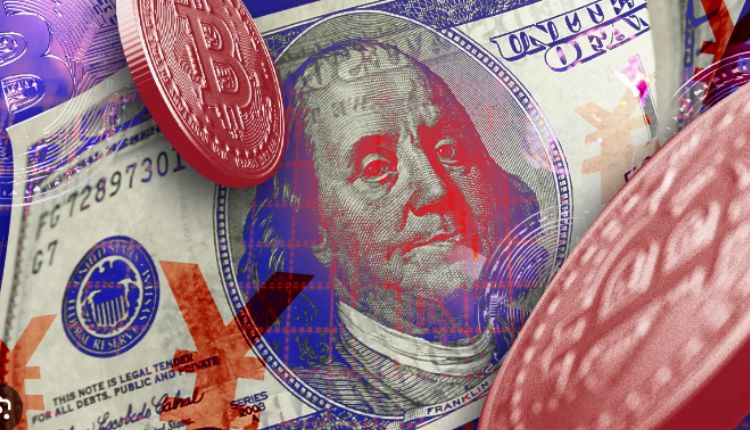Introduction:
The US Dollar Index (USDX), also known as DXY, is a crucial benchmark used to measure the value of the United States dollar against a basket of other major world currencies. As one of the most widely followed currency indices, the USDX plays a pivotal role in the global financial markets and impacts various economic aspects worldwide. This article delves into the significance of the USDX, the factors influencing its fluctuations, and its broader implications on the global economy.
Understanding The US Dollar Index:
The usd index was introduced in 1973 by the New York Board of Trade (NYBOT) as a means to assess the US dollar’s performance relative to its major trading partners. Comprised of six major currencies, the index assigns different weights to each currency based on their trade relationships with the United States. The constituent currencies include the euro (EUR), Japanese yen (JPY), British pound sterling (GBP), Canadian dollar (CAD), Swedish krona (SEK), and the Swiss franc (CHF).
Significance Of The USDX:
The USDX serves multiple essential functions in the global financial landscape:
- International Trade and Investment: As a widely recognized benchmark, the USDX influences the pricing of various commodities and international trade agreements. Many commodities, such as gold and oil, are priced in US dollars, and fluctuations in the USDX can significantly impact import and export costs.
- Reserve Currency: The US dollar has long been considered the world’s primary reserve currency. Central banks and governments hold substantial amounts of US dollars to stabilize their own currencies and foster economic stability.
- Financial Markets: Investors and traders closely monitor the USDX as it affects asset classes like stocks, bonds, and commodities. A rising dollar may lead to lower commodity prices, while a falling dollar could boost export-oriented companies.
Factors Influencing The US Dollar Index:
- Interest Rates: The US Federal Reserve’s monetary policy, including changes in interest rates, plays a pivotal role in influencing the USDX. Higher interest rates tend to attract foreign capital, increasing the demand for the dollar and driving its value up.
- Economic Indicators: Economic reports like GDP growth, employment data, and inflation figures impact the USDX. Strong economic data often strengthens the dollar, while weak data may lead to a weaker dollar.
- Geopolitical and Economic Stability: Political and economic stability in the United States attracts foreign investments, leading to increased demand for the dollar.
- Global Economic Conditions: Changes in economic conditions in major trading partners can impact the USDX. A slowdown in economies of countries with significant trade relationships with the US might strengthen the dollar.
The US Dollar Index And Global Economy:
The fluctuations in the USDX have a profound impact on the global economy:
- Exchange Rates: The USDX influences exchange rates between various currencies. A stronger dollar can lead to currency depreciation in other countries, affecting their export competitiveness.
- Inflation and Monetary Policy: Central banks in other countries often respond to changes in the USDX to maintain stable inflation and competitive trade positions.
- Emerging Markets: Fluctuations in the USDX can trigger capital flows into or out of emerging markets, impacting their financial stability and economic growth.
Conclusion:
The US Dollar Index stands as a crucial barometer for the health and strength of the United States dollar, significantly impacting global trade, investments, and financial markets. Understanding the factors that influence its fluctuations is vital for policymakers, investors, and businesses worldwide. As the global economy evolves, the USDX will continue to play a central role in shaping international economic dynamics.
FAQs:
Q1. Can the USDX predict future currency movements accurately?
While the USDX provides valuable insights into the general trend of the US dollar, it may not always predict precise short-term currency movements. Many other factors, such as geopolitical events, market sentiment, and unexpected economic developments, can influence currency fluctuations.
Q2. How often is the US Dollar Index recalculated?
The USDX is recalculated continuously throughout each trading day. The index’s value is updated in real-time, considering the exchange rates of its constituent currencies relative to the US dollar.

